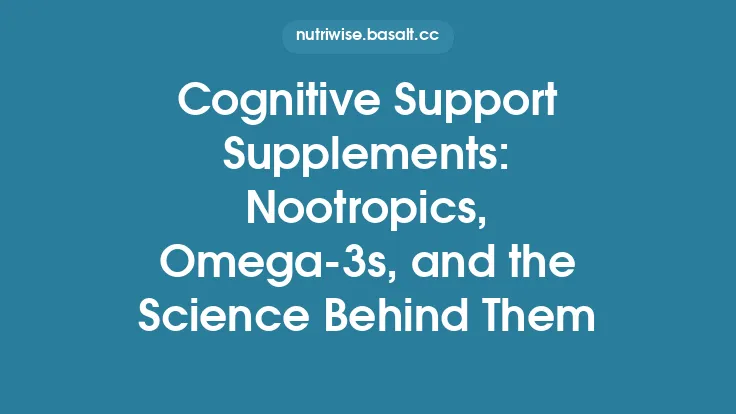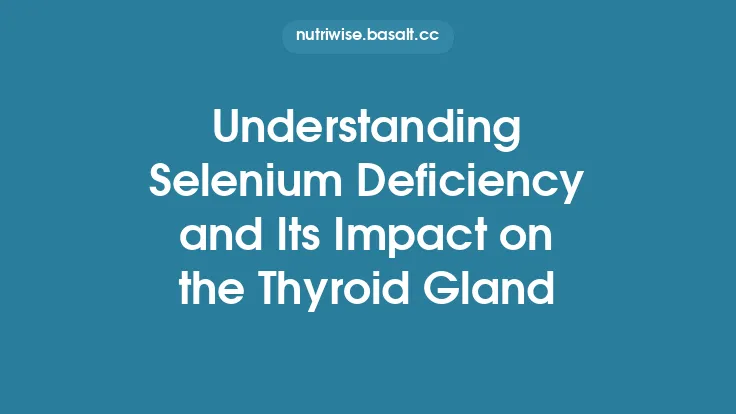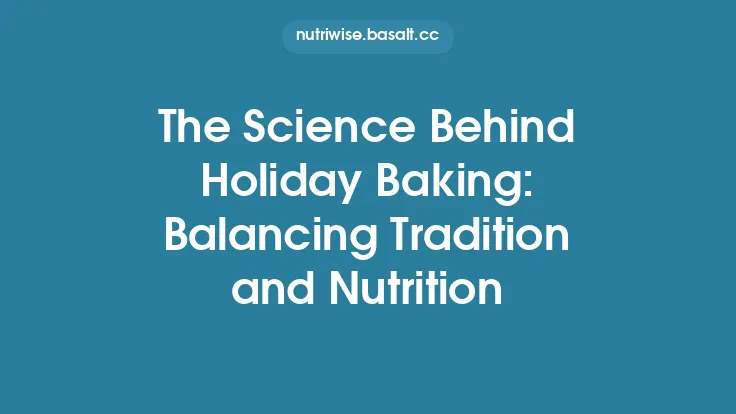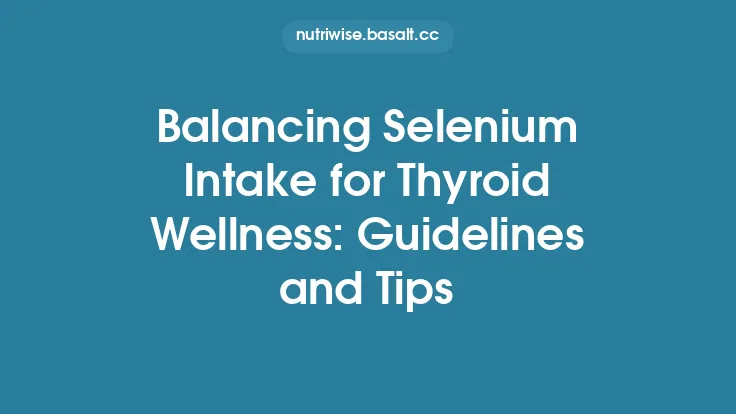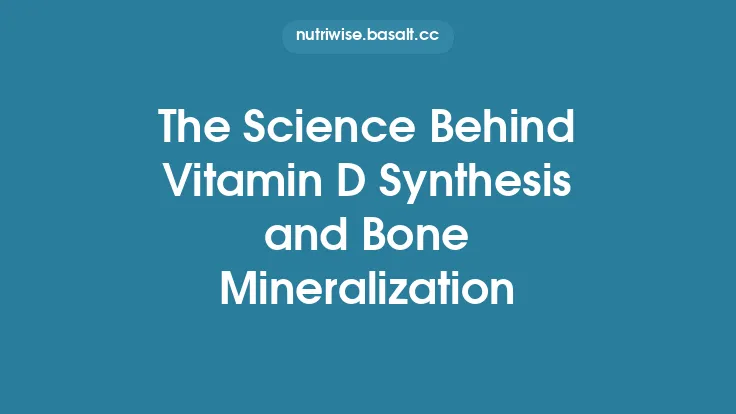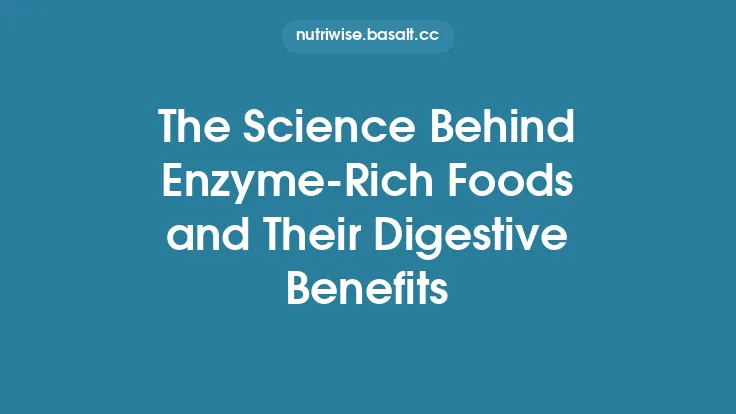The thyroid gland is a uniquely oxidative organ. Every day it produces millions of molecules of thyroid hormone, a process that inherently generates reactive oxygen species (ROS). While these ROS are essential for the iodination of thyroglobulin, their excess can damage cellular lipids, proteins, and DNA, potentially triggering inflammation, autoimmunity, and functional decline. Selenium, incorporated into a family of selenoproteins, equips the thyroid with a sophisticated antioxidant defense system that neutralizes harmful oxidants, repairs oxidative damage, and modulates redox‑dependent signaling pathways. Understanding the molecular underpinnings of selenium‑based antioxidant protection reveals why this trace element is indispensable for maintaining thyroid health over a lifetime.
The Redox Landscape of the Thyroid Gland
Physiological ROS Generation
- Hydrogen peroxide (H₂O₂) is produced by the enzyme dual oxidase (DUOX) on the apical membrane of thyrocytes. H₂O₂ serves as the oxidizing agent that enables thyroid peroxidase (TPO) to iodinate tyrosine residues on thyroglobulin.
- Superoxide anion (O₂⁻) and hydroxyl radicals (·OH) arise as by‑products of mitochondrial respiration and NADPH oxidase activity, especially during periods of high hormone synthesis.
Potential Damage
- Lipid peroxidation compromises membrane integrity, affecting ion channels and transporters critical for iodine uptake.
- Protein carbonylation impairs enzymes such as TPO and deiodinases, reducing hormone production efficiency.
- DNA oxidation (e.g., 8‑oxoguanine formation) can trigger mutagenic events and activate pro‑inflammatory pathways.
Because the thyroid must balance ROS production for hormone synthesis with protection against oxidative injury, a tightly regulated antioxidant network is essential.
Key Selenium‑Containing Antioxidant Enzymes
| Selenoprotein | Primary Antioxidant Function | Relevance to Thyroid |
|---|---|---|
| Glutathione Peroxidases (GPx1, GPx3, GPx4) | Catalyze reduction of H₂O₂ and lipid hydroperoxides using glutathione (GSH) as electron donor. | GPx1 and GPx3 detoxify extracellular H₂O₂ that diffuses from the follicular lumen; GPx4 prevents ferroptosis by reducing phospholipid hydroperoxides in thyrocyte membranes. |
| Thioredoxin Reductases (TrxR1, TrxR2) | Regenerate reduced thioredoxin (Trx) from its oxidized form, enabling Trx‑dependent peroxiredoxins to scavenge H₂O₂. | TrxR1 operates in the cytosol, while TrxR2 functions in mitochondria, protecting both compartments from ROS generated during hormone synthesis. |
| Iodothyronine Deiodinases (DIO1, DIO2, DIO3) | Although primarily involved in activation/inactivation of thyroid hormones, they contain selenocysteine at the catalytic site and can reduce intracellular H₂O₂ as a side activity. | Their dual role links redox balance directly to hormone conversion, ensuring that oxidative stress does not compromise deiodination efficiency. |
| Selenoprotein P (SelP) | Transports selenium throughout the body and possesses antioxidant activity via its multiple selenocysteine residues. | SelP delivers selenium to the thyroid and may act as a circulating scavenger of peroxynitrite and other reactive nitrogen species. |
These enzymes work synergistically: GPx reduces bulk H₂O₂, TrxR/Trx/peroxiredoxin systems handle localized peroxide spikes, and GPx4 safeguards membrane lipids from peroxidative chain reactions.
Molecular Mechanisms of Selenium‑Mediated Protection
- Direct Scavenging of Peroxides
- GPx1 reduces H₂O₂ to water:
\[
2 \, \text{GSH} + \text{H}_2\text{O}_2 \xrightarrow{\text{GPx1}} \text{GSSG} + 2 \, \text{H}_2\text{O}
\]
- This reaction prevents H₂O₂ from diffusing into the cytosol where it could oxidize critical thiol groups on signaling proteins.
- Prevention of Lipid Peroxidation and Ferroptosis
- GPx4 uses GSH to reduce phospholipid hydroperoxides (PLOOH) to their corresponding alcohols, halting the propagation of lipid radicals.
- By averting ferroptosis—a regulated, iron‑dependent cell death driven by lipid peroxidation—GPx4 preserves thyrocyte viability under oxidative stress.
- Maintenance of Redox‑Sensitive Signaling
- The Trx/TrxR system keeps transcription factors such as NF‑κB and AP‑1 in a reduced state, modulating the expression of inflammatory cytokines.
- Reduced NF‑κB activity limits the recruitment of immune cells that could otherwise exacerbate autoimmune thyroiditis.
- Repair of Oxidatively Damaged Proteins
- Selenoprotein‑mediated reduction of protein disulfides restores the functional conformation of enzymes like TPO and deiodinases after transient oxidative insults.
- Regulation of Cellular Selenium Homeostasis
- SelP not only supplies selenium but also acts as a redox buffer, neutralizing peroxynitrite (ONOO⁻) and protecting endothelial cells that supply the thyroid with nutrients.
Interplay Between Selenium Antioxidants and Thyroid Autoimmunity
Autoimmune thyroid diseases (AITDs), such as Hashimoto’s thyroiditis and Graves’ disease, are characterized by chronic inflammation and heightened oxidative stress. Several mechanistic links illustrate how selenium‑based antioxidants intervene:
- Modulation of Cytokine Profiles: Selenium‑dependent TrxR activity reduces the production of pro‑inflammatory cytokines (IL‑1β, TNF‑α) while promoting anti‑inflammatory IL‑10, shifting the immune milieu toward tolerance.
- Inhibition of Antigen Presentation: By limiting oxidative modification of thyroglobulin, selenium reduces the formation of neo‑epitopes that could be recognized as foreign by the immune system.
- Protection of Regulatory T Cells (Tregs): Redox‑balanced environments favor Treg stability; selenium’s antioxidant actions help maintain Treg suppressive function, curbing autoreactive T‑cell expansion.
Collectively, these effects suggest that adequate selenium status can dampen the oxidative triggers that fuel autoimmune cascades, even though the precise clinical outcomes depend on genetic background and environmental exposures.
Genetic Polymorphisms Influencing Selenium Antioxidant Capacity
Variations in genes encoding selenoproteins can alter enzyme efficiency and, consequently, thyroid oxidative resilience:
- GPX1 Pro198Leu (rs1050450): The Leu allele is associated with reduced GPx1 activity, leading to higher intracellular H₂O₂ levels. Individuals harboring this variant may be more susceptible to oxidative thyroid injury.
- SELENOP rs3877899 (Ala234Thr): The Thr variant reduces SelP plasma concentration, potentially limiting selenium delivery to the thyroid.
- DIO2 Thr92Ala (rs225014): Although primarily affecting deiodinase activity, the Ala variant may also influence local redox balance due to altered selenocysteine availability.
Understanding these polymorphisms helps explain inter‑individual variability in response to selenium intake and underscores the importance of personalized nutrition strategies.
Biomarkers of Selenium‑Driven Antioxidant Activity in the Thyroid
Researchers employ several laboratory measures to gauge the functional status of selenium antioxidants:
| Biomarker | What It Reflects | Typical Assay |
|---|---|---|
| Plasma/Serum Selenium | Overall selenium availability | ICP‑MS (inductively coupled plasma mass spectrometry) |
| Selenoprotein P Concentration | Selenium transport capacity | ELISA |
| Glutathione Peroxidase Activity (GPx) | Enzymatic antioxidant capacity | Spectrophotometric reduction of NADPH |
| Thioredoxin Reductase Activity | Redox recycling efficiency | DTNB‑based colorimetric assay |
| F2‑Isoprostanes in Urine | Lipid peroxidation level | LC‑MS/MS |
| 8‑Oxoguanine in Thyroid Tissue | DNA oxidative damage | Immunohistochemistry or HPLC‑ECD |
Elevated GPx or TrxR activity, coupled with low F2‑isoprostane levels, indicates a robust selenium‑dependent antioxidant shield. Conversely, discordance between plasma selenium and selenoprotein activity may signal functional deficiency despite adequate intake.
Emerging Research Directions
- Selenoprotein‑Mediated Redox Signaling
Recent studies suggest that lesser‑known selenoproteins (e.g., SelM, SelN) participate in calcium homeostasis and endoplasmic reticulum stress responses, both of which intersect with thyroid hormone synthesis pathways.
- Nanoparticle Delivery of Selenium
Selenium nanoparticles (SeNPs) exhibit enhanced bioavailability and lower toxicity compared with inorganic salts. Preclinical models demonstrate that SeNPs more effectively upregulate GPx4 and protect thyrocytes from oxidative injury.
- Systems Biology Approaches
Integrative omics (transcriptomics, proteomics, metabolomics) are being applied to map the global impact of selenium status on thyroid redox networks, revealing novel regulatory nodes such as the Nrf2‑Keap1 pathway.
- Interaction with the Microbiome
Gut microbes can metabolize dietary selenium into bioactive forms that influence systemic selenoprotein expression. Ongoing work explores how dysbiosis may modulate thyroid oxidative stress via altered selenium metabolism.
Practical Takeaways for Maintaining Selenium‑Based Thyroid Protection
- Prioritize Consistent Selenium Status: Because selenoprotein synthesis is a continuous process, maintaining stable selenium levels supports the ongoing turnover of antioxidant enzymes.
- Consider Redox Balance Holistically: Selenium works in concert with other antioxidants (e.g., vitamin C, vitamin E, coenzyme Q10). A balanced antioxidant network maximizes protection against the diverse ROS generated in the thyroid.
- Monitor Functional Biomarkers: When evaluating thyroid health, assessing GPx activity or F2‑isoprostane concentrations can provide insight into the effectiveness of the selenium antioxidant system, beyond simple serum selenium measurements.
- Be Aware of Genetic Influences: Individuals with known selenoprotein polymorphisms may benefit from targeted strategies to boost functional selenium activity, such as using organic selenium forms (e.g., selenomethionine) that are more readily incorporated into selenoproteins.
- Stay Informed on Novel Forms: As research on selenium nanoparticles and selenoprotein‑targeted therapeutics progresses, future interventions may offer more precise ways to enhance thyroid antioxidant defenses.
In summary, selenium’s antioxidant arsenal—anchored by glutathione peroxidases, thioredoxin reductases, deiodinases, and transport proteins—forms a sophisticated shield that neutralizes the inevitable ROS generated during thyroid hormone production, repairs oxidative damage, and modulates immune responses that could otherwise precipitate thyroid disease. By appreciating the molecular choreography of these selenoproteins, clinicians, researchers, and health‑conscious individuals can better understand how this trace element underpins long‑term thyroid resilience.
